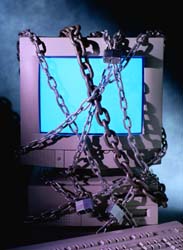Digital watermarking for IPR protection
A three-year project funded by the IST Programme sought to gather digital cultural content online from a large number of scattered, independent sources. Furthermore, a centralised online workspace was created to allow the various stakeholders to manage and exploit these valuable components of Europe's vast cultural heritage. Protection of Intellectual Property Rights (IPR) has always been an issue, but has taken on new meaning and importance in the digital age. Digitisation of text, images, audio and video and the increased freedom and speed of exchange provided by the World Wide Web (WWW) have seen a marked rise in IPR violations. To deal with this issue, the project consortium developed a digital watermarking tool to ensure the authenticity of both content and its providers. Digital watermarking embeds a special message or code into a piece of digital content, such as a document or video file, which contains information about copyright protection and data authentication. But the needs of such a vast digital repository are varied;therefore, the tool had to be flexible. As such, two algorithms were created for watermarking, one robust and one fragile. Essential to the positive outcome of the project was the optimisation of the algorithms for the specific application. This aspect of the tool will allow other potential users to tweak it according to their needs, balancing the opposing constraints of complexity and usability. The partners involved in the project, entitled COLLATE, as well as a spin-off company want to elevate the digital watermarking tool to the next level. This will involve testing it with different types of content and for different applications. Only by resolving long-standing issues of security will we be able to realise the full potential of digital content and the WWW.







